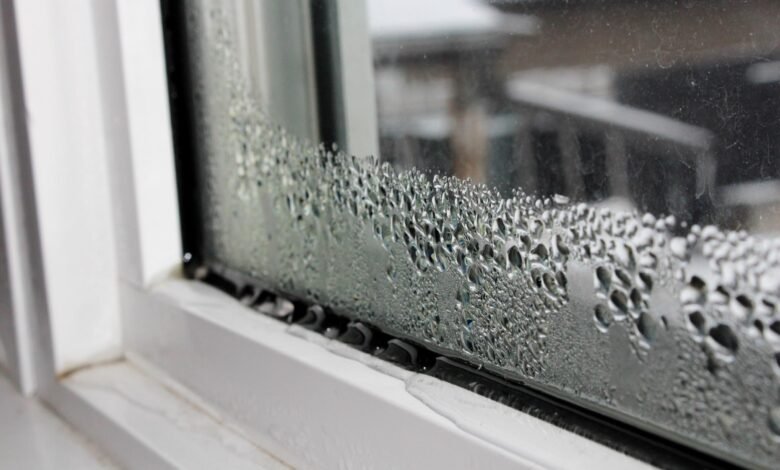How to Identify and Treat Condensation in Your Southampton Home

Condensation is a common issue that many homeowners in Southampton face. Left untreated, it can lead to dampness, mold growth, and structural damage, all of which can compromise the integrity and comfort of your home. This comprehensive guide will help you understand how to identify and treat condensation Southampton effectively, ensuring a healthy living environment.
Understanding Condensation
What is Condensation?
Condensation occurs when warm, moist air comes into contact with a cold surface, such as windows, walls, or floors. The moisture in the air cools and condenses into water droplets on these surfaces. This is a natural process but can become problematic when it leads to damp and mold.
Types of Condensation
- Surface Condensation: Commonly found on windows, walls, and floors, it is the result of moist air hitting cold surfaces.
- Interstitial Condensation: Occurs within the layers of a building’s structure, such as within walls or roofs, leading to hidden damage.
- Cold Bridge Condensation: Happens at points where insulation is not continuous, creating a cold spot that attracts moisture.
Causes of Condensation
Environmental Factors
Climate and Weather
Southampton’s maritime climate, characterized by mild, wet winters and cool summers, increases the likelihood of condensation due to high humidity levels.
Seasonal Changes
Seasonal transitions, particularly from warm to cold weather, can exacerbate condensation as indoor and outdoor temperature differences become more pronounced.
Internal Factors
Humidity Levels
Everyday activities like cooking, bathing, and drying clothes indoors release moisture into the air, raising humidity levels and leading to condensation.
Poor Ventilation
Homes that lack proper ventilation systems or have sealed windows and doors are more prone to condensation because moist air cannot escape.
Insulation
Insufficient or poorly installed insulation can create cold spots within a home’s structure, making those areas more susceptible to condensation.
Identifying Condensation
Visual Signs
Water Droplets
Water droplets on windows, walls, and other cold surfaces are a clear sign of condensation. These droplets form when warm, moist air comes into contact with these cold surfaces.
Damp Patches
Damp patches on walls, ceilings, and floors indicate areas where condensation has occurred. These patches can appear discolored or feel damp to the touch.
Secondary Signs
Musty Odors
A musty odor in your home often indicates the presence of mold and dampness caused by condensation. This smell can permeate furniture, carpets, and other household items.
Peeling Wallpaper and Paint
Peeling wallpaper and flaking paint are signs of moisture damage. Condensation can cause these materials to lose adhesion, leading to visible deterioration.
Health Implications of Condensation
Respiratory Issues
Mold spores released into the air can cause respiratory problems such as asthma and allergies. Inhaling these spores can irritate the respiratory tract and exacerbate existing health conditions.
Allergic Reactions
Exposure to mold and dampness can trigger allergic reactions, including sneezing, runny nose, and skin rashes. These symptoms can be particularly severe for individuals with existing allergies or compromised immune systems.
Preventing Condensation
Improving Ventilation
Natural Ventilation
Opening windows and doors can help increase air circulation and reduce indoor humidity levels. Cross-ventilation, where air flows through the home from one side to the other, is particularly effective.
Mechanical Ventilation
Installing extractor fans in kitchens and bathrooms can help remove moist air at the source. Whole-house ventilation systems, such as heat recovery ventilation (HRV) units, also improve air quality and reduce humidity levels.
Reducing Humidity
Use Dehumidifiers
Dehumidifiers can help reduce indoor humidity levels by extracting moisture from the air. Place dehumidifiers in areas prone to condensation, such as kitchens, bathrooms, and basements.
Avoid Drying Clothes Indoors
Drying clothes indoors can significantly increase indoor humidity levels. Use a tumble dryer vented to the outside or dry clothes outside whenever possible.
Proper Heating
Consistent Heating
Maintaining a consistent indoor temperature can help prevent condensation. Avoid letting your home get too cold, especially during the winter months, and use a programmable thermostat to maintain steady heating levels.
Insulating Your Home
Ensure that your home is adequately insulated, particularly in the roof, walls, and floors. Insulating these areas helps maintain a consistent indoor temperature, reducing the likelihood of condensation.
Treating Condensation
Short-Term Solutions
Wiping Surfaces
Regularly wiping down surfaces prone to condensation can help prevent the buildup of moisture and reduce the risk of mold growth. Use a dry cloth or squeegee to remove water droplets from windows and walls.
Temporary Dehumidifiers
Using portable dehumidifiers can provide temporary relief from high humidity levels. These devices are particularly useful during periods of high moisture production, such as after cooking or bathing.
Long-Term Solutions
Installing Ventilation Systems
Installing mechanical ventilation systems, such as extractor fans or HRV units, can provide a long-term solution to condensation by ensuring continuous air exchange and reducing humidity levels.
Upgrading Insulation
Investing in high-quality insulation can help prevent cold spots and reduce the risk of condensation. Ensure that insulation is installed correctly to avoid creating thermal bridges that can attract moisture.
Case Studies: Treating Condensation in Southampton Homes
Victorian Terrace House
Problem
A Victorian terrace house in Southampton experienced severe condensation issues, particularly during the winter months. The homeowners noticed damp patches on the walls and mold growth around the windows.
Solution
A professional inspection revealed inadequate ventilation and insulation as the primary causes of condensation. The homeowners installed extractor fans in the kitchen and bathroom and upgraded the insulation in the loft and walls. These measures significantly reduced humidity levels and eliminated condensation issues.
Modern Apartment
Problem
A modern apartment in Southampton had persistent condensation on the windows and cold spots on the walls. The tenants also reported a musty odor and peeling wallpaper.
Solution
The building management installed a whole-house ventilation system, improving air circulation and reducing humidity levels. They also applied a mold-resistant paint to the affected walls and sealed any gaps in the insulation. These actions resolved the condensation issues and improved indoor air quality.
Professional Help for Condensation Issues
When to Seek Professional Help
Persistent Condensation
If you experience persistent condensation despite implementing preventive measures, it may be time to seek professional help. Continuous dampness and mold growth can indicate underlying issues that require expert intervention.
Structural Damage
Significant structural damage, such as rotting wood or compromised plaster, should be addressed by professionals. These issues can affect the safety and integrity of your home and require specialized treatment.
Choosing a Professional
Qualifications and Experience
Choose a professional with relevant qualifications and experience in dealing with condensation issues. Look for certifications from reputable industry bodies and positive customer reviews.
Services Offered
Ensure that the professional offers a comprehensive range of services, including inspection, diagnosis, and treatment of condensation issues. They should also provide advice on preventive measures to avoid future problems.
DIY Methods to Manage Condensation
Using Humidity Meters
Invest in a humidity meter to monitor the humidity levels in your home. This device can help you identify areas with high moisture levels and take appropriate actions to reduce them.
Applying Anti-Condensation Paint
Anti-condensation paint can help reduce condensation on walls by creating a thermal barrier. This paint is particularly useful in bathrooms, kitchens, and other high-humidity areas.
Sealing Windows and Doors
Ensure that windows and doors are properly sealed to prevent cold air from entering and warm, moist air from escaping. Use weather stripping or caulk to seal any gaps.
Frequently Asked Questions About Condensation
How Can I Tell If I Have Condensation or Damp?
Condensation typically appears as water droplets on cold surfaces, while dampness often manifests as discolored patches on walls and ceilings. Both issues can lead to mold growth, but dampness may also cause a musty odor and peeling wallpaper.
Is Condensation Worse in Winter?
Yes, condensation is often worse in winter due to the temperature difference between indoor and outdoor environments. Cold surfaces, combined with indoor activities that produce moisture, can increase the likelihood of condensation.
Can Condensation Cause Structural Damage?
Yes, prolonged condensation can lead to structural damage, including rotting wood, compromised plaster, and mold growth. Addressing condensation Southampton promptly can help prevent these issues and maintain the integrity of your home.
What Is the Best Way to Prevent Condensation in Bathrooms?
Installing an extractor fan in the bathroom can help remove moist air at the source. Additionally, keeping the bathroom door closed while showering and using a dehumidifier can further reduce humidity levels and prevent condensation.
How Often Should I Check for Condensation?
Regularly check for condensation, particularly during the winter months and after activities that produce moisture, such as cooking or bathing. Promptly addressing any signs of condensation can help prevent more significant issues.
Conclusion
Identifying and treating condensation in your Southampton home is crucial to maintaining a healthy and comfortable living environment. By understanding the causes of condensation, implementing preventive measures, and using both short-term and long-term solutions, you can effectively manage and prevent condensation-related issues. Regular inspections, proper ventilation, and adequate insulation are key to keeping your home free from dampness, mold, and structural damage. If you encounter persistent problems, seeking professional help can provide the expertise needed to address and resolve condensation issues thoroughly.

